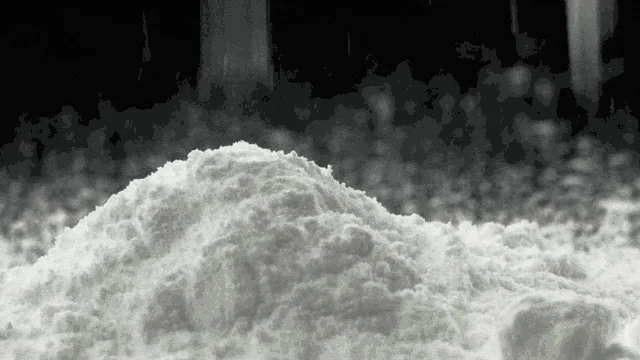Antioxidants are additives used in polymers to enhance their stability and lifespan. They protect polymers from degradation caused by exposure to oxygen, heat, light, and other environmental factors. Here's a detailed explanation of antioxidants in polymers, covering their application, types, and more:
1. Role of Antioxidants in Polymers
Antioxidants help prevent oxidative degradation of polymers. When polymers are exposed to heat, UV light, or mechanical stress, free radicals can form, leading to chain scission, cross-linking, or other harmful reactions. This can result in changes in the polymer’s properties such as color fading, brittleness, or reduced strength. Antioxidants counteract this by scavenging free radicals or decomposing peroxides.
2. Applications of Antioxidants in Polymers
Antioxidants are used in a wide variety of polymer applications, including:
Plastic packaging: To prevent degradation during processing and storage.
Automotive parts: To maintain material integrity under heat and light exposure.
Construction materials: To ensure long-term stability of materials like pipes, films, and insulation.
Electrical components: To prevent breakdown due to thermal and oxidative stress.
Medical devices: Where maintaining material properties is critical over time.
3. Types of Antioxidants for Polymers
Antioxidants are classified into different types based on their mechanism of action:
Primary antioxidants (Free-radical scavengers) These antioxidants terminate the polymer degradation process by neutralizing free radicals. Examples include:
Phenolic antioxidants: They react with free radicals to form stable molecules.
Example: Butylated hydroxytoluene (BHT), Irganox 1010
Aminic antioxidants: Mostly used for heat resistance in rubber and polyurethane.
Example: N-phenyl-1-naphthylamine
Secondary antioxidants (Peroxide decomposers) These break down hydroperoxides, preventing further oxidation of the polymer.
Phosphites and phosphonites: They decompose peroxides into non-radical products.
Example: Tris(nonylphenyl) phosphite (TNPP)
Thioethers: Work similarly to phosphites, providing long-term stability.
Example: Dilauryl thiodipropionate (DLTDP)
Synergistic antioxidants Often, a combination of primary and secondary antioxidants is used to provide a synergistic effect, where the total effectiveness is higher than the individual components.
4. Formula and Chemistry of Antioxidants
Antioxidants are typically organic compounds with structures that enable them to donate hydrogen atoms or electrons to free radicals. Common structures include:
Phenolic groups: Found in phenolic antioxidants, these groups can easily donate hydrogen atoms to neutralize free radicals.
Formula example: Irganox 1010 (C73H108O12)
Phosphite esters: These antioxidants work by decomposing hydroperoxides.
Formula example: TNPP (C45H69O3P)
The exact formulation of an antioxidant blend for a polymer depends on the type of polymer and its intended application.
5. Grades of Antioxidants
The grades of antioxidants depend on their molecular structure, concentration, and purpose. Common grades include:
Low molecular weight antioxidants: Used for general protection during processing and application. These tend to volatilize more easily and may migrate out of the polymer over time.
High molecular weight antioxidants: These have better thermal stability and are less likely to migrate, providing long-term protection. Examples include hindered phenols like Irganox 1076.
The choice of grade is determined by factors such as:
Processing temperature: High-temperature processes require more heat-stable antioxidants.
Final product usage: Outdoor applications often need UV-stable antioxidants.
Regulatory concerns: In food packaging or medical devices, the antioxidants must comply with safety regulations.
6. Selection of Antioxidants for Specific Polymers
Different polymers require different types of antioxidants. Here are a few examples:
Polypropylene (PP): Typically uses phenolic antioxidants and phosphites to prevent oxidation during processing and long-term use.
Polyethylene (PE): Requires antioxidants to prevent degradation, especially during high-temperature processing.
Polyvinyl chloride (PVC): Often uses a combination of stabilizers and antioxidants to prevent oxidative degradation and discoloration.
Elastomers: Rubber materials often require specialized aminic antioxidants to prevent heat-induced degradation.
7. Common Trade Names
There are many commercially available antioxidant additives from various suppliers. Some common trade names include:
Irganox (by BASF): Widely used in a variety of polymers for thermal and oxidative stabilization.
Songnox (by Songwon): Offers a broad range of phenolic and phosphite antioxidants.
Ciba: Provides antioxidant blends for plastics, elastomers, and other polymer applications.
8. Usage in Formulations
Antioxidants are typically used at low concentrations in polymers, often in the range of 0.1% to 1% by weight, depending on the application. A typical formulation for a plastic product might include:
Phenolic antioxidant: 0.2% to 0.4%
Phosphite antioxidant: 0.1% to 0.3%
UV stabilizer: For outdoor applications
These additives are mixed into the polymer during compounding, ensuring even distribution throughout the material.
Conclusion
Antioxidants play a crucial role in protecting polymers from oxidative damage, thereby extending their lifespan and preserving their properties. Selecting the right type and grade of antioxidant depends on the polymer’s chemical structure, processing conditions, and end-use environment. By using the appropriate antioxidant additives, manufacturers can ensure better performance and durability of polymer products across a wide range of industries.
Let me know if you’d like more detailed information on a specific type of antioxidant or polymer system!






